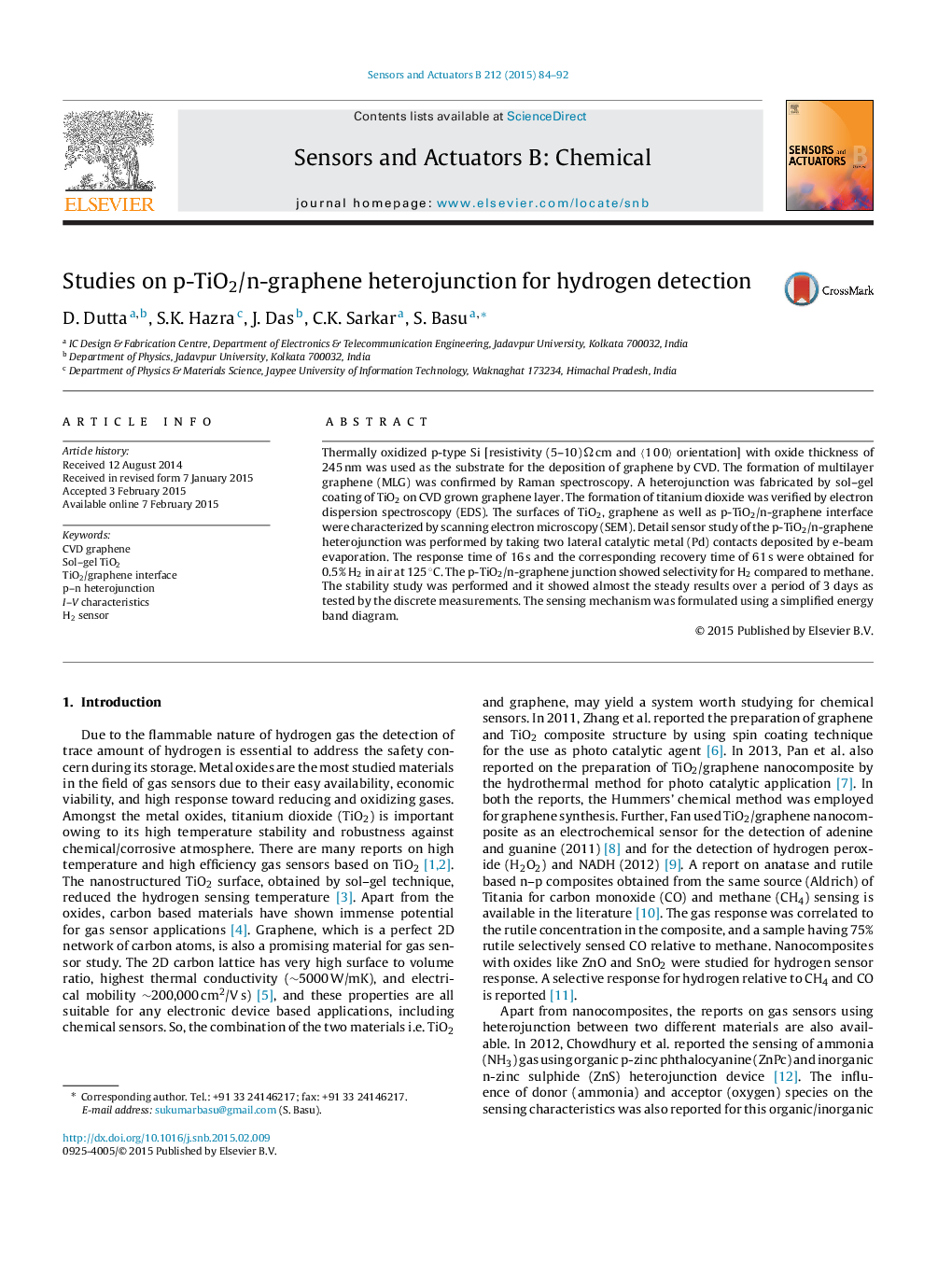| Article ID | Journal | Published Year | Pages | File Type |
|---|---|---|---|---|
| 7145867 | Sensors and Actuators B: Chemical | 2015 | 9 Pages |
Abstract
Thermally oxidized p-type Si [resistivity (5-10) Ω cm and ã1 0 0ã orientation] with oxide thickness of 245 nm was used as the substrate for the deposition of graphene by CVD. The formation of multilayer graphene (MLG) was confirmed by Raman spectroscopy. A heterojunction was fabricated by sol-gel coating of TiO2 on CVD grown graphene layer. The formation of titanium dioxide was verified by electron dispersion spectroscopy (EDS). The surfaces of TiO2, graphene as well as p-TiO2/n-graphene interface were characterized by scanning electron microscopy (SEM). Detail sensor study of the p-TiO2/n-graphene heterojunction was performed by taking two lateral catalytic metal (Pd) contacts deposited by e-beam evaporation. The response time of 16 s and the corresponding recovery time of 61 s were obtained for 0.5% H2 in air at 125 °C. The p-TiO2/n-graphene junction showed selectivity for H2 compared to methane. The stability study was performed and it showed almost the steady results over a period of 3 days as tested by the discrete measurements. The sensing mechanism was formulated using a simplified energy band diagram.
Related Topics
Physical Sciences and Engineering
Chemistry
Analytical Chemistry
Authors
D. Dutta, S.K. Hazra, J. Das, C.K. Sarkar, S. Basu,
